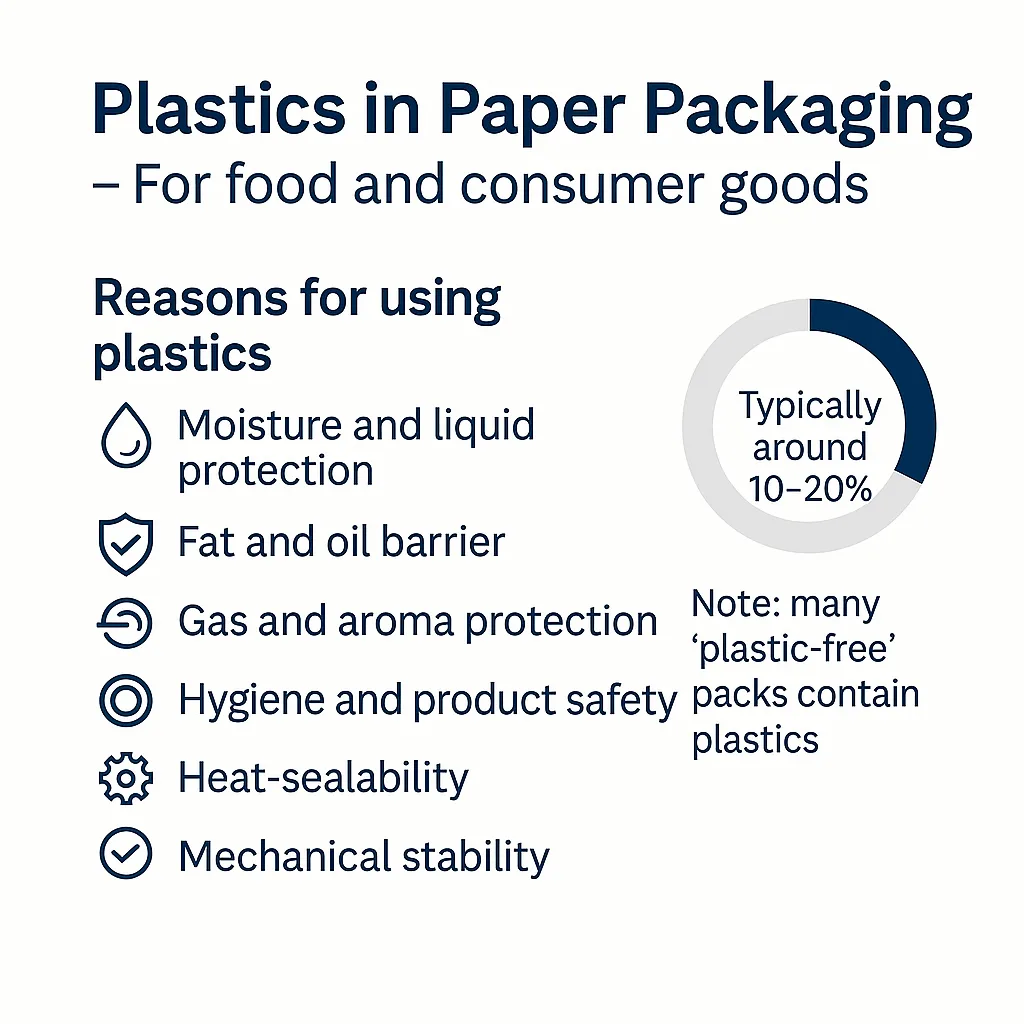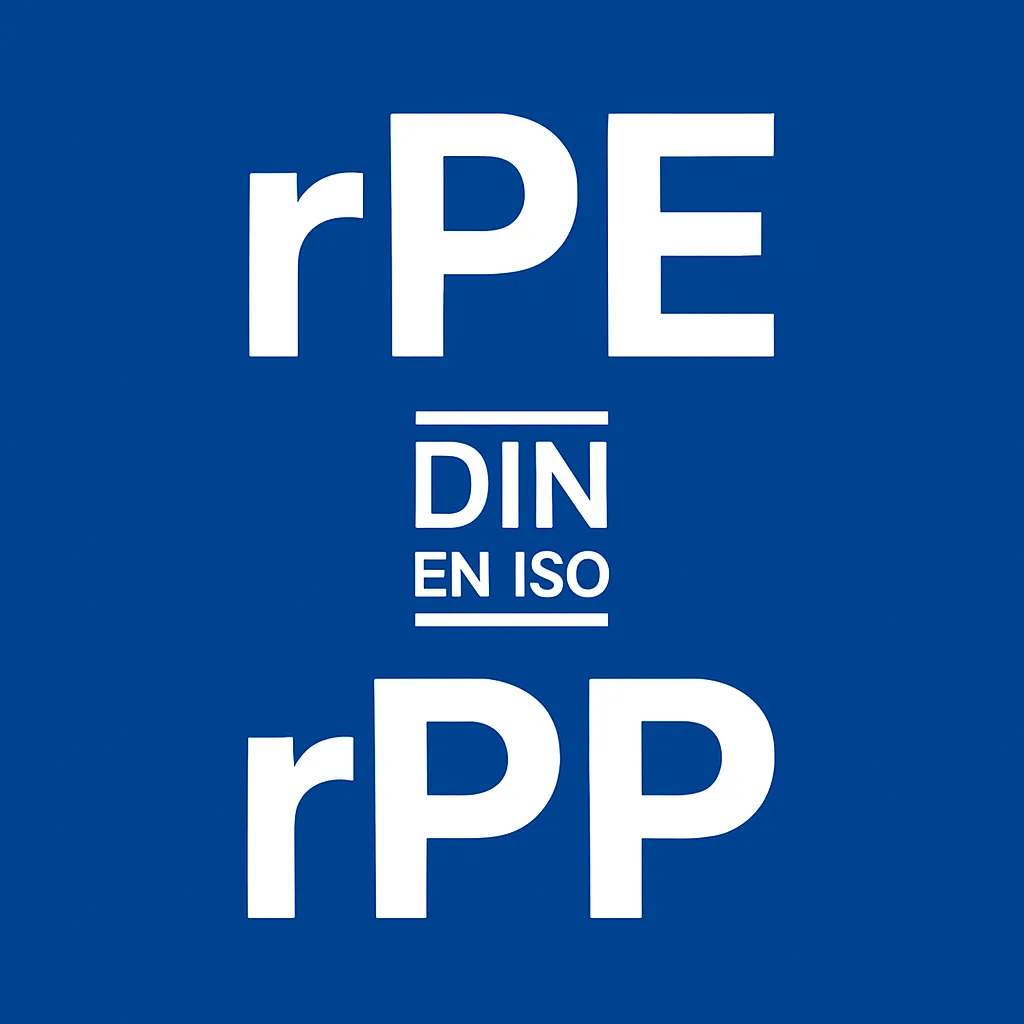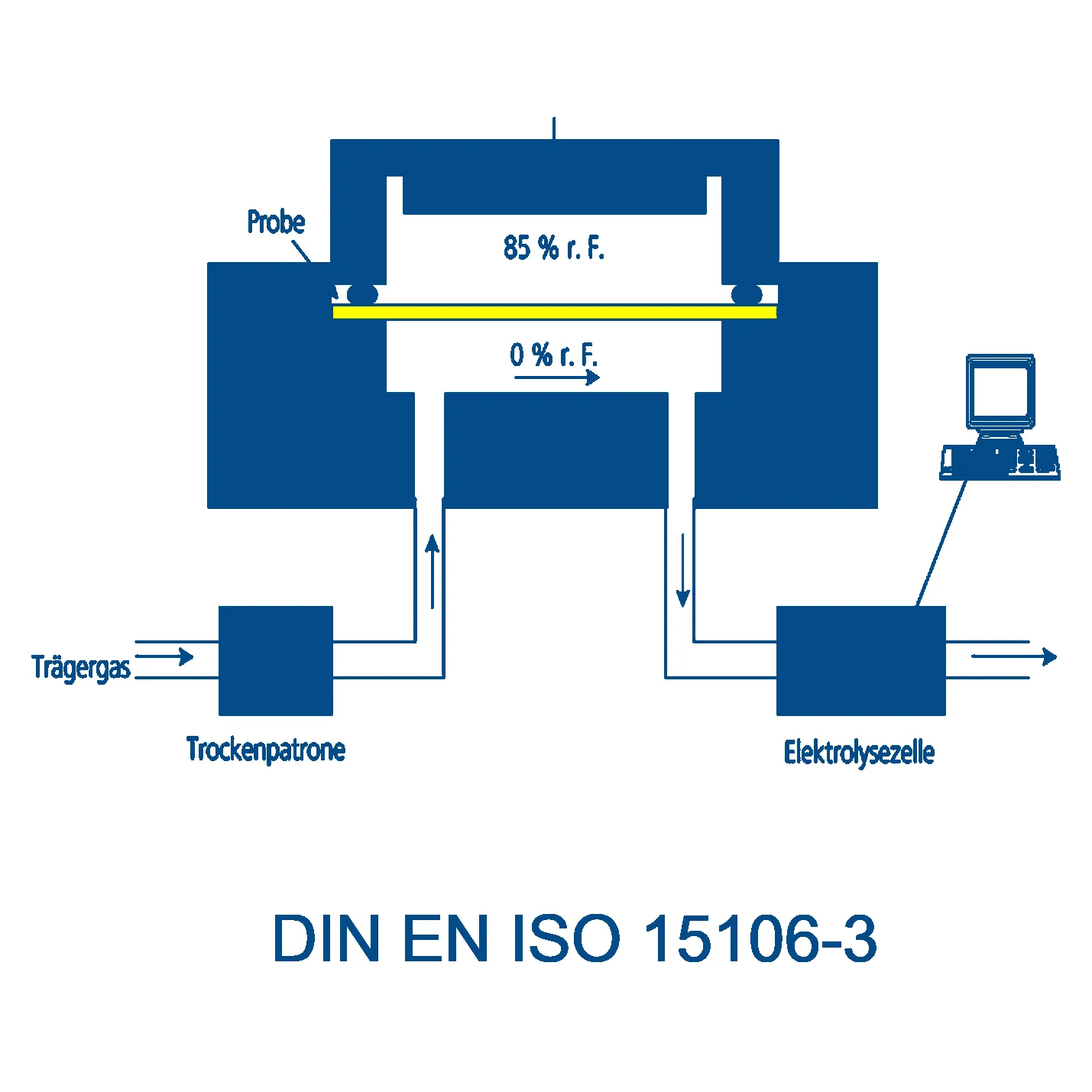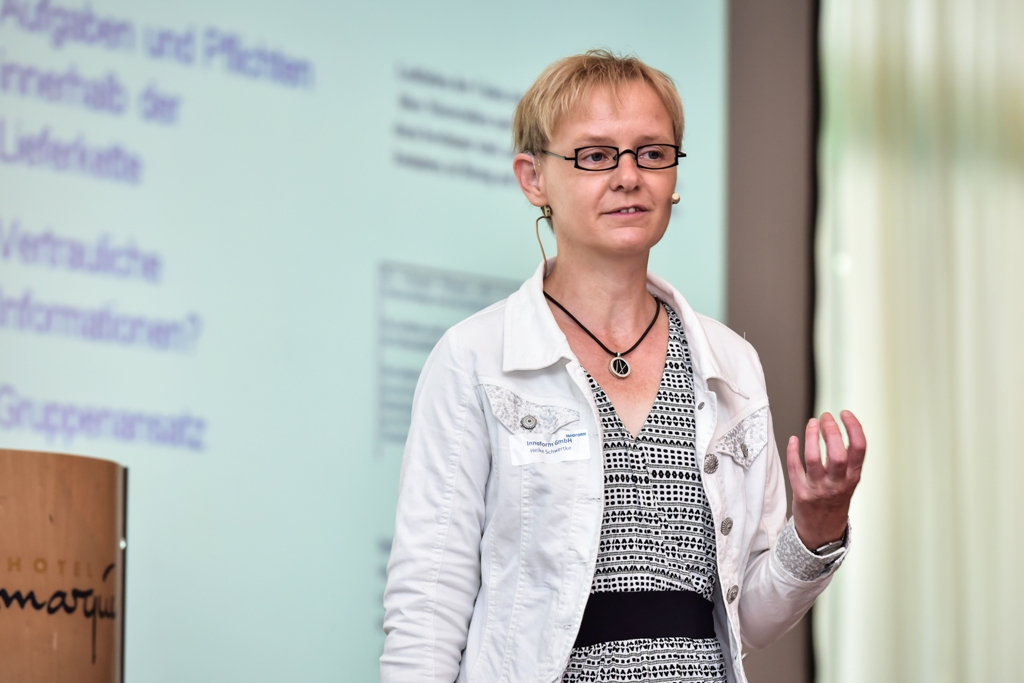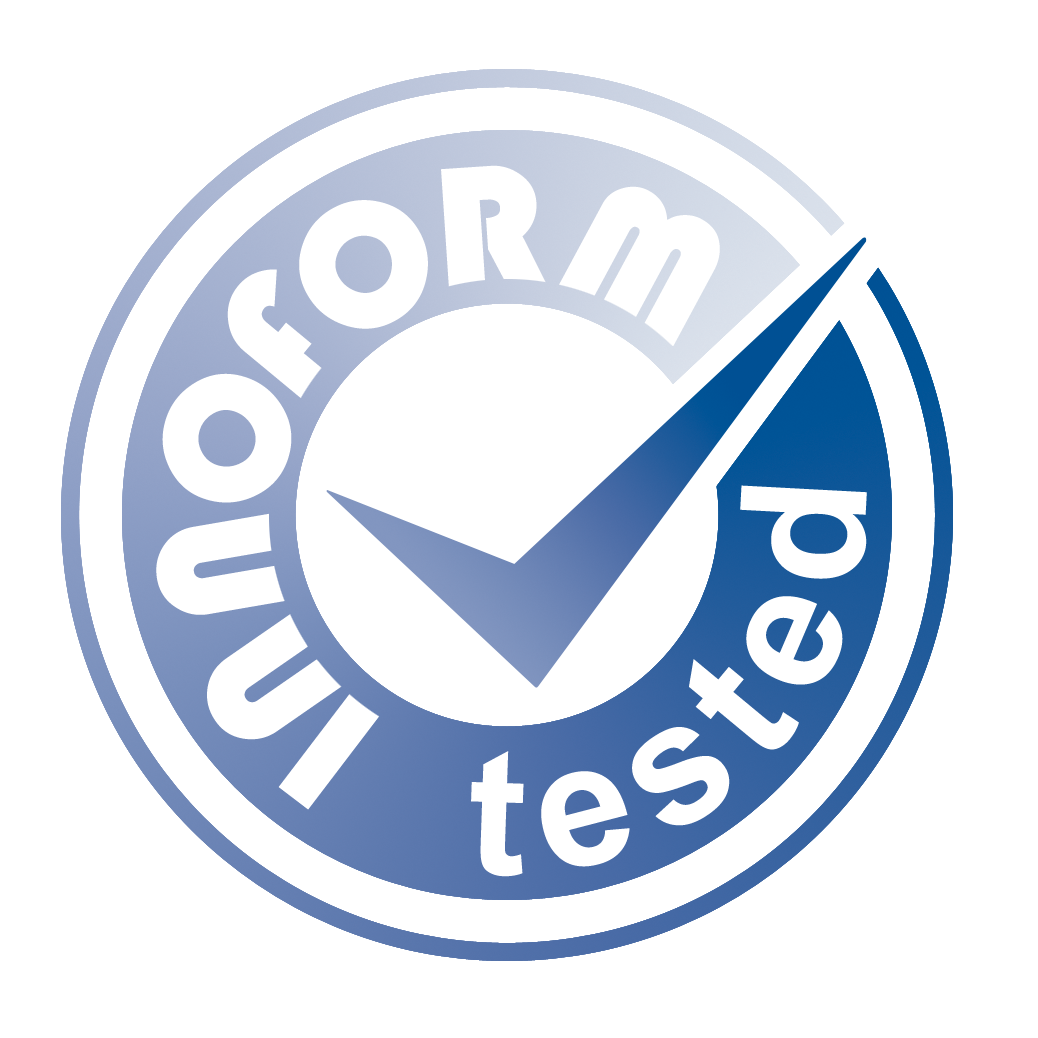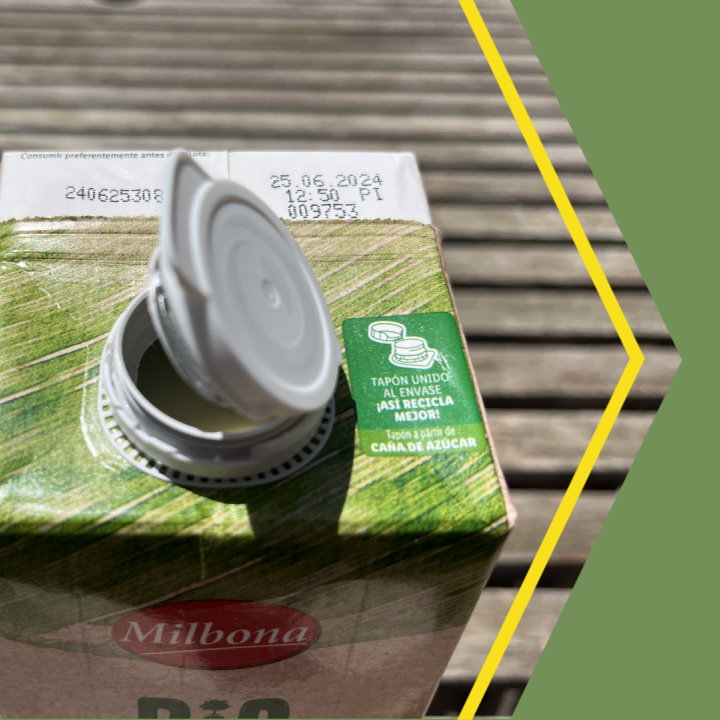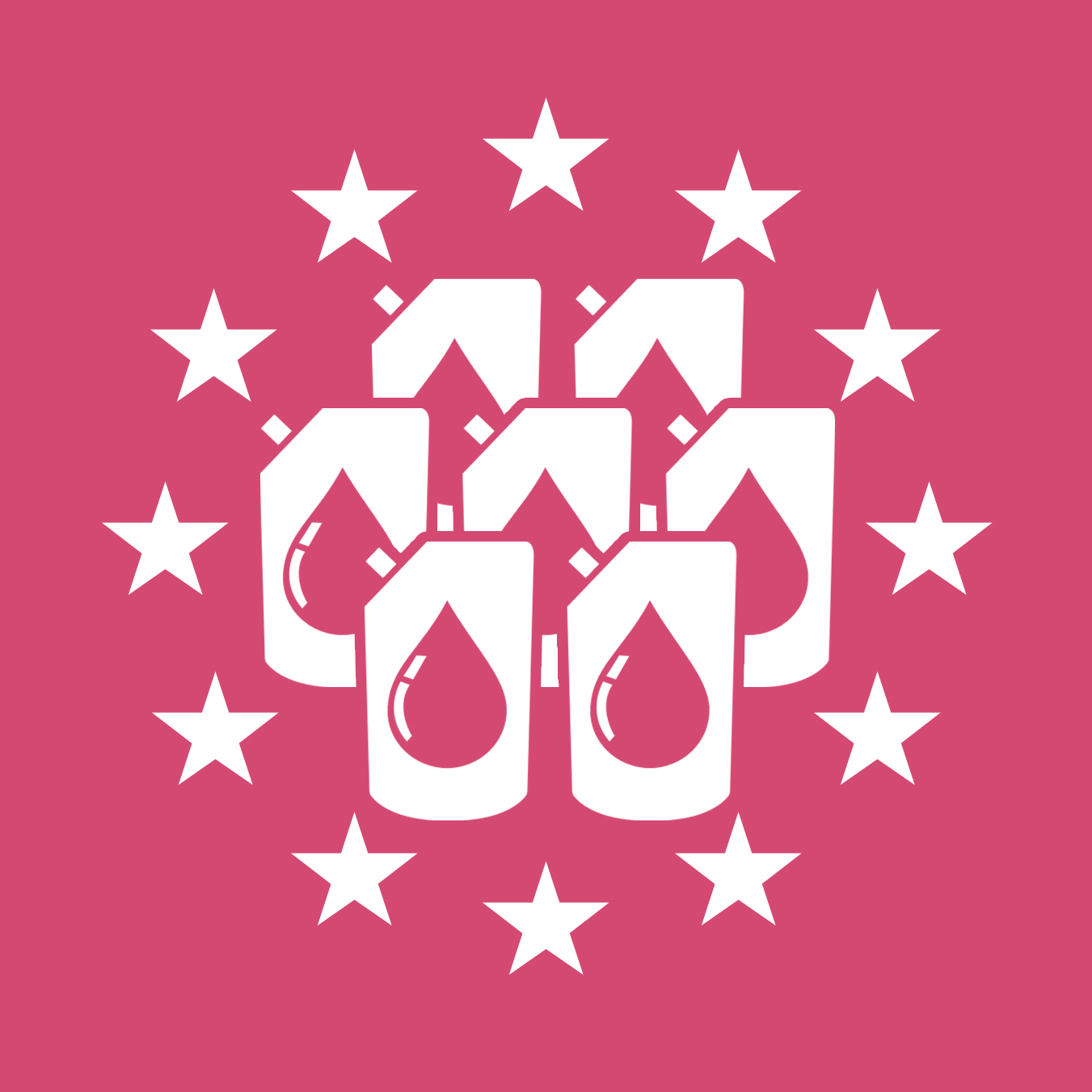Part 1: Overview for food and consumer goods
Reasons for plastic content in paper packaging
Paper alone does not offer all the properties required for the protection and shelf life of packaged goods. Without a chemical or plastic-based coating, paper/cardboard cannot fulfil many packaging functions – especially in direct contact with food. For this reason, paper is often provided with a thin layer of plastic that serves as a functional barrier. Typical reasons for the use of plastic components are
- Moisture and liquid protection: Paper is naturally permeable to water and water vapour. A plastic coating, on the other hand, makes the packaging resistant to water, moisture and liquids so that, for example, no water or water vapour can penetrate. This prevents the paper from softening or becoming soggy – for example with frozen food packaging or cups for hot drinks.
- Fat and oil barrier: Foods with a high fat content (fast food, baked goods, snacks) require a fat-repellent inner coating. Plastic layers prevent the packaging from becoming greasy. Without this barrier, oils and fats would penetrate the paper and make it soggy or unsightly.
- Gas and flavour protection: Many foods need to be protected from oxygen, carbon dioxide or other gases to ensure a long shelf life. Paper is permeable to gases, so a plastic with very low permeability is often used. For example, special polymers provide almost impermeable oxygen and flavour protection so that the flavour of coffee is retained in paper-based coffee packaging and no air penetrates from the outside.
- Hygiene and product safety: A continuous plastic layer on the inside can serve as a safe contact surface with the food. It prevents fibres or particles of the paper from getting into the food and can thus ensure sensory neutrality (no foreign odour or taste). In addition, such layers can act as a functional barrier that reduces the transfer of undesirable substances (e.g. printing inks from the paper) into the food.
- Sealability (sealing): Many types of packaging – bags, coated paper films, to-go cup lids, etc. – must be thermally sealed to ensure a tight seal. Pure paper cannot simply be welded. The plastic component, on the other hand, is weldable, i.e. it melts when heated and thus enables stable sealing seams. Without the plastic component, coffee cups, for example, could not be sealed tightly with lids and paper bags could not be sealed automatically.
- Mechanical stability: In some cases, the plastic content also contributes to the tear resistance and stabilisation of the composite material. The plastic layer can reinforce the paper and make it less susceptible to tears, punctures or mechanical stress – important for heavy or pointed packaged goods, for example.
To summarise, thin plastic layers make it possible to give paper-based packaging similar protective properties to pure plastic packaging without losing the outward appearance of “cardboard/paper”. Moisture, grease, gases and germs are kept out and the packaging remains stable and sealable, which is crucial for ensuring product quality and shelf life. Studies typically put the plastic content of such functionalised paper packaging at up to around 10-20% by weight of the total packaging – a seemingly small proportion, but one that has a major impact on the performance of the packaging.
If you would like to know how the plastic content is tested and categorised, please subscribe to our newsletter – updates will follow.
Author: Dr Daniel Wachtendorf, Innoform GmbH August 2025

